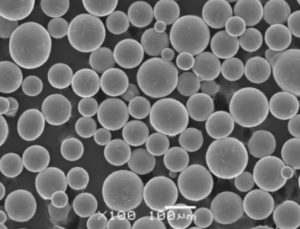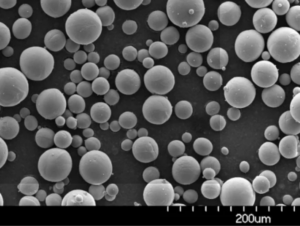Bu Plazma Dönen Elektrot Süreci, genellikle PREP olarak kısaltılır, yüksek kaliteli metal tozları üretmek için büyüleyici ve son derece uzmanlaşmış bir yöntemdir. Dönen bir elektrot ve bir plazma arkını içeren bu işlem, katkı imalatı, havacılık ve biyomedikal implantlar dahil olmak üzere çeşitli yüksek performanslı uygulamalar için gerekli olan tozlar oluşturur. Bu işlemin ayrıntılarına dalalım, nüanslarını, uygulamalarını ve üretebileceği farklı metal tozu türlerini keşfedelim.
Plazma-Döner Elektrot İşleminin Genel Bakışı
Plazma-Döner Elektrot İşlemi (PREP), yüksek saflıkta ve tek tip boyut dağılımına sahip küresel metal tozları üretmek için kullanılan son teknoloji bir tekniktir. Bu işlem, dönen bir elektrotun bir plazma arkı kullanılarak eritilmesini içerir, daha sonra ince tozlar halinde katılaşan damlacıklar oluşturur. İşte PREP'in neler içerdiğine dair bir özet:
- Teknik: Dönen elektrotun plazma arkı ile eritilmesi
- Sonuç: Yüksek kaliteli, küresel metal tozları
- Uygulamalar: Katkı imalatı, havacılık, biyomedikal implantlar ve daha fazlası
- Avantajlar: Yüksek saflık, tek tip boyut ve mükemmel toz özellikleri
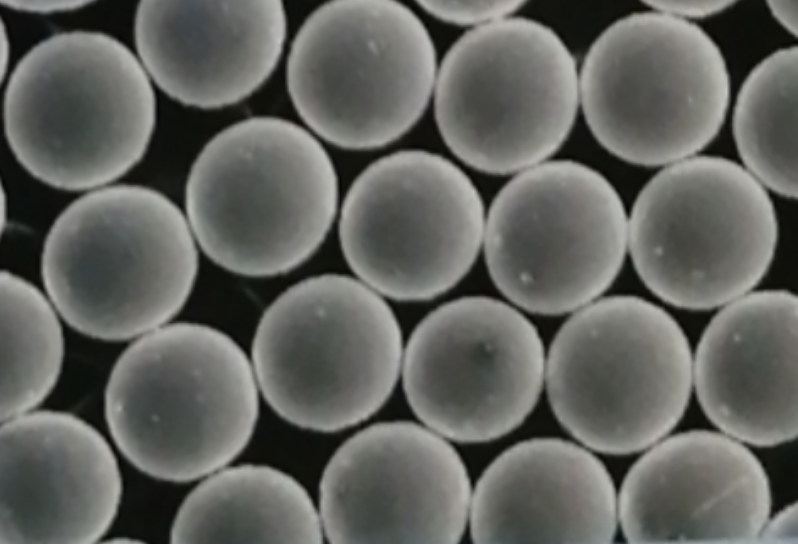
PREP Tarafından Üretilen Metal Tozları Türleri
1. Titanyum Alaşımı (Ti-6Al-4V)
Açıklama: Ti-6Al-4V, mükemmel mukavemet-ağırlık oranı ve korozyon direnci ile bilinen bir titanyum alaşımıdır. Havacılık, tıbbi cihazlar ve yüksek performanslı mühendislik uygulamalarında yaygın olarak kullanılmaktadır.
2. Paslanmaz Çelik (316L)
Açıklama: 316L paslanmaz çelik, yüksek korozyon direncine ve mükemmel mekanik özelliklere sahip bir östenitik paslanmaz çeliktir. Deniz ortamlarında, tıbbi cihazlarda ve gıda işleme ekipmanlarında yaygın olarak kullanılır.
3. Inconel 718
Açıklama: Inconel 718, yüksek sıcaklıklarda yüksek mukavemeti ve korozyon direnci ile bilinen bir nikel-krom alaşımıdır. Gaz türbinlerinde, havacılıkta ve kimyasal işlemede yaygın olarak kullanılmaktadır.
4. Alüminyum Alaşımı (AlSi10Mg)
Açıklama: AlSi10Mg, iyi döküm özelliklerine ve yüksek termal iletkenliğe sahip bir alüminyum-silisyum-magnezyum alaşımıdır. Otomotiv ve havacılık uygulamalarında sıklıkla kullanılır.
5. Kobalt-Krom Alaşımı (CoCrMo)
Açıklama: CoCrMo, aşınma direnci ve biyouyumluluğu ile bilinen bir kobalt-krom-molibden alaşımıdır. Öncelikli olarak tıbbi implantlarda ve diş protezlerinde kullanılır.
6. Bakır Alaşımı (CuCrZr)
Açıklama: CuCrZr, yüksek mukavemet ve mükemmel termal ve elektriksel iletkenlik sunan krom ve zirkonyum içeren bir bakır alaşımıdır. Elektrik ve termal yönetim uygulamalarında kullanılır.
7. Takım Çeliği (H13)
Açıklama: H13, yüksek tokluğa ve termal yorulmaya karşı dirence sahip bir krom-molibden sıcak iş takım çeliğidir. Döküm ve ekstrüzyon takımlarında kullanılır.
8. Maraging Çelik (18Ni300)
Açıklama: 18Ni300, ultra yüksek mukavemeti ve tokluğu ile bilinen bir maraging çeliktir. Havacılık bileşenlerinde, takımlarda ve yüksek performanslı mühendislik parçalarında kullanılır.
9. Tantal
Açıklama: Tantal, yüksek korozyon direncine ve mükemmel biyouyumluluğa sahip nadir bir metaldir. Tıbbi implantlarda, elektronik cihazlarda ve kimyasal işleme ekipmanlarında kullanılır.
10. Nikel Alaşımı (Hastelloy X)
Açıklama: Hastelloy X, olağanüstü oksidasyon ve yüksek sıcaklık mukavemetine sahip nikel bazlı bir süper alaşımdır. Gaz türbini motorlarında, kimyasal işlemede ve endüstriyel ısıtmada kullanılır.
PREP'te Metal Tozlarının Bileşimi
PREP ile üretilen metal tozlarının bileşimi, belirli uygulamalardaki performansları için çok önemlidir. İşte her bir metal tozu türünde bulunan birincil elementlerin bir dökümü:
| Metal Tozu | Kompozisyon |
|---|---|
| Ti-6Al-4V | Ti (), Al (%6), V (%4) |
| 316L | Fe (), Cr (), Ni (), Mo (%2,5), Mn (%2) |
| Inconel 718 | Ni (-55), Cr (-21), Fe (denge), Nb (%4,75-5,5), Mo (%2,8-3,3) |
| AlSi10Mg | Al (-92), Si (%9-10), Mg (%0,3-0,5) |
| CoCrMo | Co (-65), Cr (-30), Mo (%5-7) |
| CuCrZr | Cu (-99), Cr (%0,5-1,2), Zr (%0,03-0,3) |
| H13 | Fe (denge), Cr (%5), Mo (%1,3), Si (%1) |
| 18Ni300 | Fe (denge), Ni (-19), Co (%8-9), Mo (%4,5-5) |
| Tantal | Ta (,95% min) |
| Hastelloy X | Ni (-50), Cr (-23), Fe (-20), Mo (%8-10) |
PREP Metal Tozlarının Özellikleri
tarafından üretilen metal tozlarının özellikleri Plazma Dönen Elektrot Süreci onları çeşitli endüstrilerde oldukça aranır hale getirir. Gelin bu özellikleri inceleyelim:
| Karakteristik | Açıklama |
|---|---|
| Parçacık Boyutu | Dar boyut dağılımına sahip ince, küresel parçacıklar |
| Saflık | Minimum kirlilik ile yüksek saflık |
| Morfoloji | Tutarlı akış ve paketleme için tek tip küresel şekil |
| Yoğunluk | Toz |
| Oksidasyon | Üretim sırasında inert gaz ortamı nedeniyle düşük oksidasyon seviyeleri |
| Akışkanlık | 3D baskıda homojen katmanlama için mükemmel akış özellikleri |


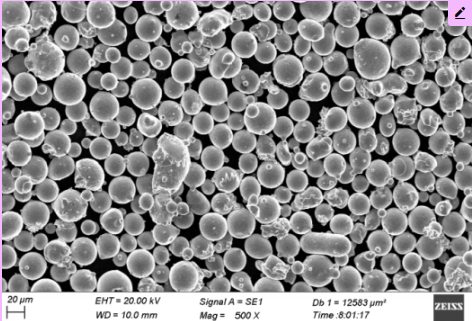
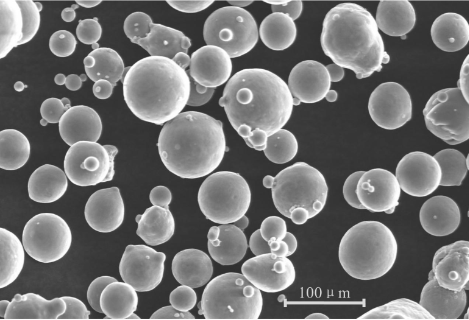
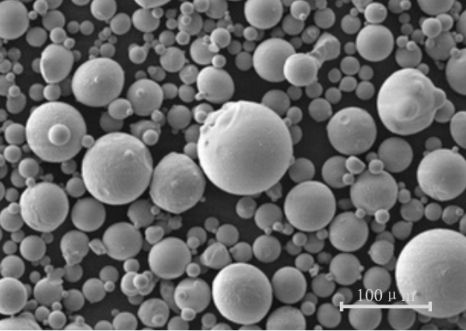

PREP Metal Tozlarının Uygulamaları
PREP ile üretilen metal tozları, üstün kaliteleri ve özellikleri nedeniyle çok çeşitli uygulamalarda kullanılmaktadır. İşte bazı önemli uygulamalara bir bakış:
| Uygulama | Metal Tozu | Açıklama |
|---|---|---|
| Katmanlı Üretim | Ti-6Al-4V, 316L, Inconel 718 | Karmaşık, yüksek performanslı parçalar için 3D baskıda kullanılır |
| Havacılık ve Uzay Bileşenleri | Ti-6Al-4V, Inconel 718, H13 | Uçak ve uzay araçları için yüksek mukavemetli, hafif parçalar |
| Tıbbi İmplantlar | CoCrMo, Ti-6Al-4V, Tantal | İmplantlar ve protezler için biyouyumlu malzemeler |
| Otomotiv Parçaları | AlSi10Mg, 316L | Araçlar için hafif, yüksek mukavemetli bileşenler |
| Elektrik İletkenleri | CuCrZr | Elektrik ve termal uygulamalar için yüksek iletkenlikli malzemeler |
| Takım ve Kalıplar | H13, 18Ni300 | İmalat araçları ve kalıpları için dayanıklı malzemeler |
| Kimyasal İşleme | Hastelloy X, Inconel 718 | Sert kimyasal ortamlara karşı korozyona dayanıklı malzemeler |
PREP Metal Tozları için Özellikler ve Standartlar
PREP ile üretilen metal tozları, kalitelerini ve çeşitli uygulamalar için uygunluklarını sağlamak için belirli standartlara ve özelliklere uymalıdır. İşte bazı tipik özellikler:
| Metal Tozu | Partikül Boyut Aralığı | Saflık | Standartlar |
|---|---|---|---|
| Ti-6Al-4V | 15-45 µm | ,5 min. | ASTM F2924, AMS 4998 |
| 316L | 10-50 µm | ,9 min. | ASTM A276, AMS 5648 |
| Inconel 718 | 20-60 µm | ,0 min. | AMS 5662, ASTM B637 |
| AlSi10Mg | 20-60 µm | ,8 min. | EN 1706, ASTM B247 |
| CoCrMo | 15-45 µm | ,0 min. | ASTM F75, ISO 5832-4 |
| CuCrZr | 10-50 µm | ,9 min. | ASTM B224, AMS 4534 |
| H13 | 20-60 µm | ,5 min. | ASTM A681, AMS 6408 |
| 18Ni300 | 15-45 µm | ,0 min. | ASTM A579, AMS 6514 |
| Tantal | 10-40 µm | ,95 min. | ASTM B521, AMS 7847 |
| Hastelloy X | 20-60 µm | ,0 min. | AMS 5754, ASTM B435 |
PREP Metal Tozlarının Tedarikçileri ve Fiyatlandırması
PREP metal tozları pazarı, farklı fiyat noktalarında çeşitli kaliteler ve boyutlar sunan bir dizi tedarikçiyi içerir. İşte bir
genel bakış:
| Tedarikçi | Metal Tozu | Fiyat Aralığı (kg başına) |
|---|---|---|
| AP&C (GE Katkı Maddesi) | Ti-6Al-4V, 316L, Inconel 718 | $300 – $700 |
| Höganäs AB | AlSi10Mg, CoCrMo, H13 | $200 – $600 |
| Sandvik Osprey | CuCrZr, 18Ni300, Hastelloy X | $250 – $800 |
| Praxair Yüzey Teknolojileri | Ti-6Al-4V, Inconel 718, Tantal | $400 – $900 |
| Marangoz Teknolojisi | 316L, H13, 18Ni300 | $250 – $700 |
PREP Metal Tozlarının Artıları ve Eksilerini Karşılaştırmak
Her malzemenin ve sürecin avantajları ve sınırlamaları vardır. PREP tarafından üretilen metal tozlarının artılarını ve eksilerini karşılaştıralım:
| Aspect | Avantajlar | Sınırlamalar |
|---|---|---|
| Parçacık Morfolojisi | Küresel parçacıklar akışı ve paketleme yoğunluğunu artırır | Karmaşık ve maliyetli süreç |
| Saflık | Minimum kirlilik ile yüksek saflık | Yüksek kaliteli ham maddeler gerektirir |
| Boyut Dağılımı | Dar boyut dağılımı, homojenlik sağlar | Belirli parçacık boyutu aralıklarıyla sınırlıdır |
| Mekanik Özellikler | Yüksek performanslı uygulamalar için uygun üstün mekanik özellikler | Bazı malzemeler yine de işlem sonrası uygulamalar gerektirebilir |
| Üretim Maliyeti | Yüksek performanslı uygulamalar için uygun maliyetli | Yüksek ilk kurulum ve işletme maliyetleri |
| Uygulama Aralığı | Çeşitli endüstrilerde çok yönlü | Tüm metaller ve alaşımlar PREP için uygun değildir |
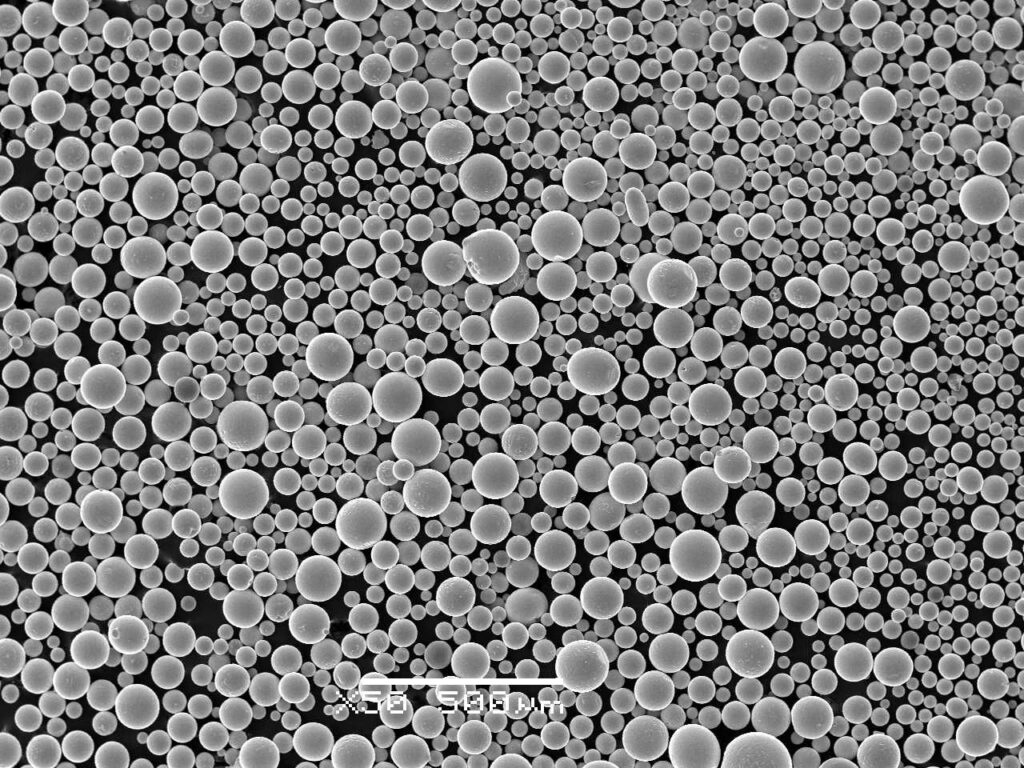
SSS
1. Nedir Plazma Dönen Elektrot Süreci (PREP)?
Cevap: Plazma-Döner Elektrot İşlemi (PREP), dönen bir elektrotun bir plazma arkı ile eritilmesiyle yüksek kaliteli, küresel metal tozları üretmek için kullanılan bir yöntemdir.
2. PREP metal tozlarının başlıca uygulamaları nelerdir?
Cevap: PREP metal tozları, katmanlı imalat, havacılık, tıbbi implantlar, otomotiv parçaları, elektrik iletkenleri, takım ve kalıplar ve kimyasal işlemede kullanılır.
3. Metal tozları üretmek için PREP kullanmanın avantajları nelerdir?
Cevap: PREP, yüksek saflık, homojen parçacık boyutu, mükemmel akış özellikleri ve elde edilen tozların üstün mekanik özellikleri gibi avantajlar sunar.
4. PREP kullanılarak ne tür metaller işlenebilir?
Cevap: PREP kullanılarak titanyum alaşımları, paslanmaz çelikler, nikel alaşımları, alüminyum alaşımları, kobalt-krom alaşımları, bakır alaşımları, takım çelikleri, martensitik çelikler, tantal ve daha fazlası dahil olmak üzere çeşitli metaller ve alaşımlar işlenebilir.
5. PREP metal tozlarının maliyeti, diğer toz üretim yöntemleriyle nasıl karşılaştırılır?
Cevap: PREP'in ilk kurulum ve işletme maliyetleri yüksek olsa da, elde edilen ürünlerin üstün kalitesi ve özellikleri nedeniyle yüksek performanslı tozlar üretmek için uygun maliyetlidir.
6. Plazma-Döner Elektrot İşleminin herhangi bir sınırlaması var mı?
Cevap: Evet, sınırlamalar arasında sürecin karmaşıklığı ve maliyeti, yüksek kaliteli ham maddelere duyulan ihtiyaç ve belirli parçacık boyutu aralıklarıyla sınırlama yer alır.
7. PREP metal tozları katmanlı imalata nasıl fayda sağlar?
Cevap: PREP metal tozları, yüksek saflıkta ve mükemmel akışkanlığa sahip ince, küresel parçacıklar sağlayarak katmanlı imalata fayda sağlar ve bu da daha iyi katman birikimine ve nihai basılı parçalarda üstün mekanik özelliklere yol açar.
8. Tüm metaller ve alaşımlar PREP kullanılarak üretilebilir mi?
Cevap: Tüm metaller ve alaşımlar PREP için uygun değildir. İşlem, eritildiğinde ve katılaştırıldığında ince, küresel tozlar oluşturabilen malzemeler için en etkilidir.
9. PREP metal tozları için bazı yaygın standartlar ve özellikler nelerdir?
Cevap: PREP metal tozları için yaygın standartlar ve özellikler arasında, tozların çeşitli uygulamalar için kalitesini ve tutarlılığını sağlayan ASTM, AMS ve ISO standartları bulunur.
10. PREP metal tozlarını nereden satın alabilirim?
Cevap: PREP metal tozları, diğerlerinin yanı sıra AP&C (GE Additive), Höganäs AB, Sandvik Osprey, Praxair Surface Technologies ve Carpenter Technology gibi tedarikçilerden satın alınabilir.
Sonuç olarak, Plazma-Döner Elektrot İşlemi, yüksek kaliteli metal tozlarının üretiminde hayati bir teknolojidir. Bu tozlar, havacılıktan biyomedikal implantlara kadar çeşitli yüksek performanslı uygulamalar için gereklidir. Bu işlemin inceliklerini, uygulamalarını ve ürettiği özel metal tozlarını anlayarak, modern imalat ve mühendislik üzerindeki önemli etkisini takdir edebiliriz. İster bir üretici, ister bir mühendis olun, ister gelişmiş malzemeler hakkında meraklı olun, Plazma-Döner Elektrot İşlemi, malzeme bilimi ve teknolojisinin geleceğine büyüleyici bir bakış sunar.
